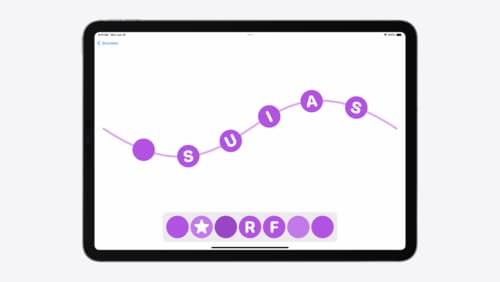State management in SwiftUI
Asked on 2024-09-06
1 search
In the session titled "SwiftUI essentials" at WWDC 2024, state management in SwiftUI is discussed in detail. SwiftUI provides several tools for managing state, including @State and @Binding.
-
State: This is used to create a new internal source of data for a view. When you mark a view property with
@State, SwiftUI manages the storage and provides it back for the view to read and write. This allows the view to react to changes in the state and update the UI accordingly. -
Binding: A binding creates a two-way reference to the state of another view. This is useful when you want to share state between views, allowing them to stay in sync. For example, if you have a container view and a child view, you can pass a binding from the container to the child, ensuring that both views reflect the same state.
The session also highlights how SwiftUI automatically updates the UI when the state changes, eliminating the need for boilerplate code and reducing update bugs. SwiftUI's declarative nature means that views are descriptions of the UI's current state, and SwiftUI handles the updates efficiently behind the scenes.
For more details, you can refer to the session SwiftUI essentials (10:41).

Enhance your UI animations and transitions
Explore how to adopt the zoom transition in navigation and presentations to increase the sense of continuity in your app, and learn how to animate UIKit views with SwiftUI animations to make it easier to build animations that feel continuous.

What’s new in SwiftUI
Learn how you can use SwiftUI to build great apps for any Apple platform. Explore a fresh new look and feel for tabs and documents on iPadOS. Improve your window management with new windowing APIs, and gain more control over immersive spaces and volumes in your visionOS apps. We’ll also take you through other exciting refinements that help you make expressive charts, customize and layout text, and so much more.

SwiftUI essentials
Join us on a tour of SwiftUI, Apple’s declarative user interface framework. Learn essential concepts for building apps in SwiftUI, like views, state variables, and layout. Discover the breadth of APIs for building fully featured experiences and crafting unique custom components. Whether you’re brand new to SwiftUI or an experienced developer, you’ll learn how to take advantage of what SwiftUI has to offer when building great apps.
